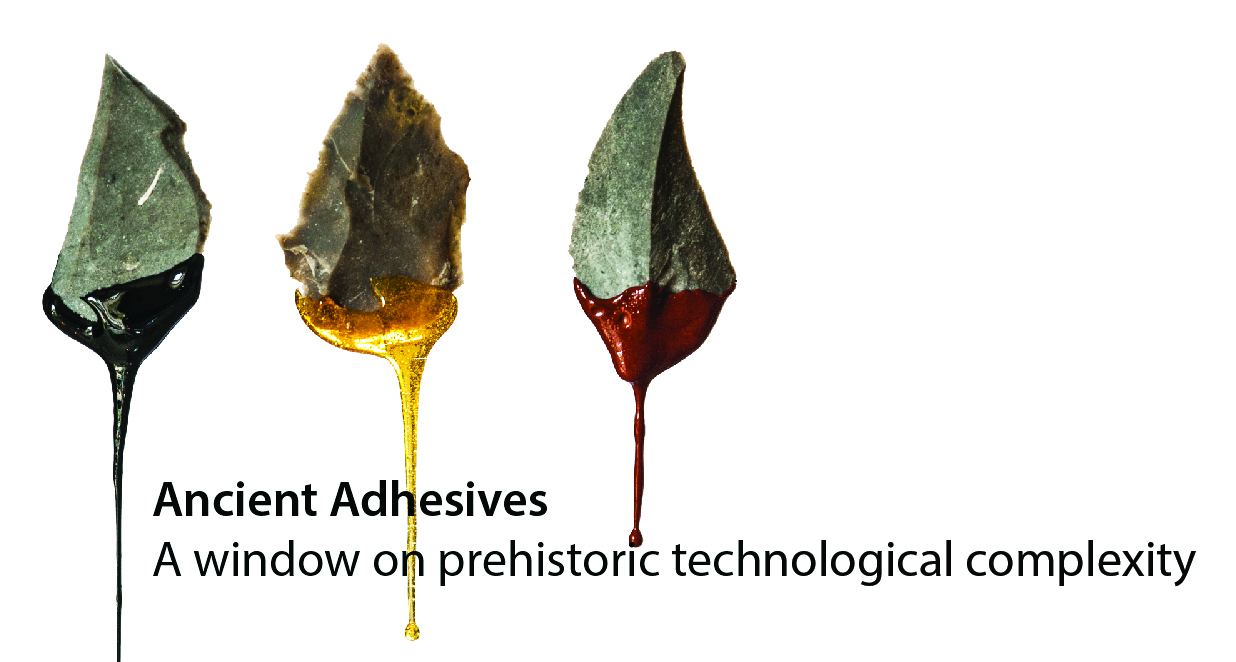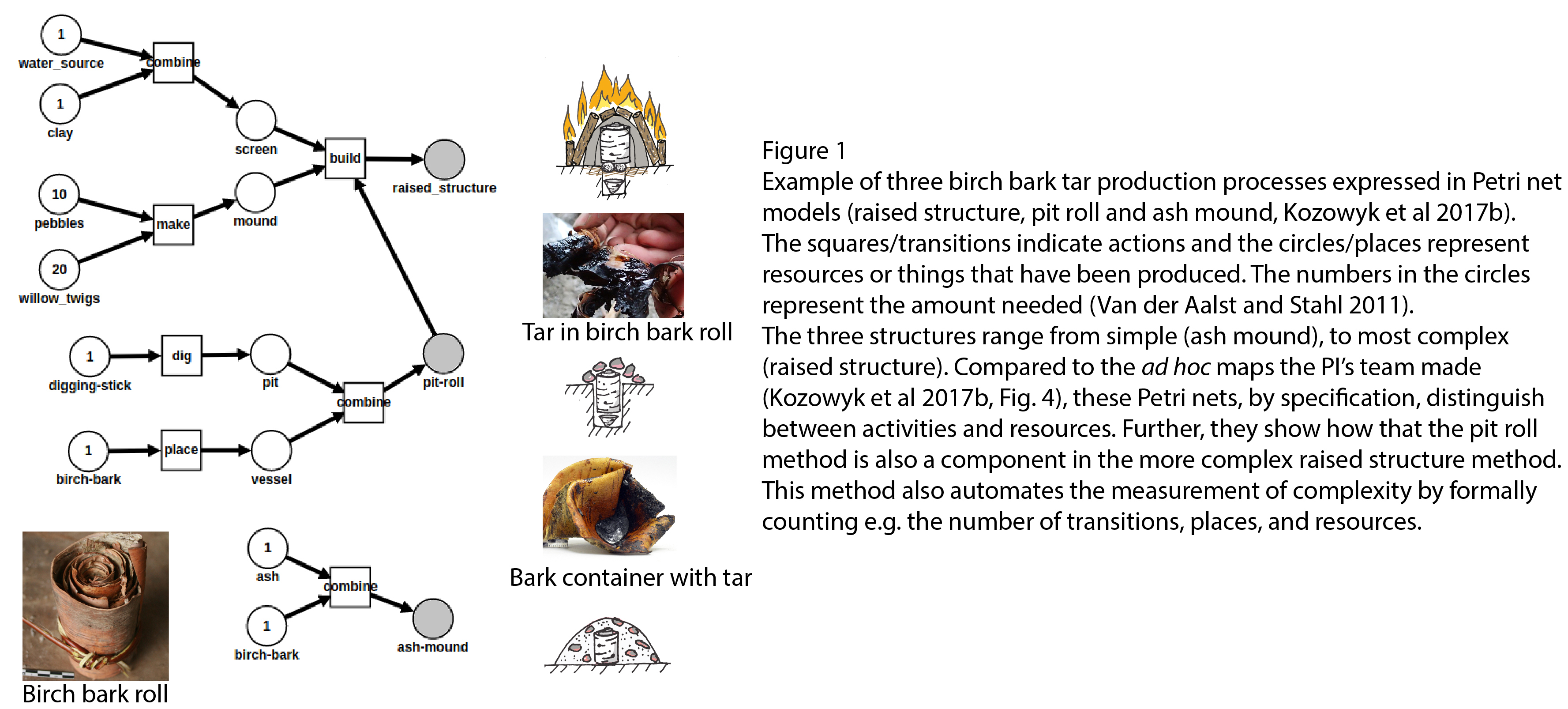Ancient Adhesives - A window on prehistoric technological complexity
The Ancient Adhesives project aims to create a new computational method to study technological complexity in (pre)historic times. We do this with 29 partners mainly from museums and universities, and with funding from the European Research Counsel (ERC). The project’s models are initially applied to measure the complexity of prehistoric glue technology. They can be adapted to analyse and compare different technologies, for example copper smelting and pottery production.
Glue: behavioural and technological complexity
To study the evolution of Neanderthal and modern human cognitive capacities, certain archaeological find categories are taken to reflect behavioural and thus cognitive complexity. Among these are art objects, pigments, personal ornaments and complex technologies like composite tools and adhesives. Technology is best-suited to trace changing behavioural complexity, because unlike art objects and ornaments it is present throughout the history of our genus. Adhesives are one of the the oldest example of highly complex technology. They are also known earlier from Neanderthal than from modern human contexts. Understanding their technological complexity is thus essential to resolve debates on differences in cognitive complexity between both species. However, there is currently no systematic method to measure technological complexity.
The Ancient Adhesives project resolves this problem by employing an automated formal method to model and compare the technological complexity of ancient technologies. The project focuses on Neanderthal and modern human adhesives. Adhesive finds are the earliest possible evidence for the use of complex technologies, and adhesives were used by both Neanderthals and early modern humans. The project will therefore contribute to the long-standing debate on their cognitive and behavioural differences and similarities.
Complexity measures
The aim of the Ancient Adhesives project is to create the first formal and quantitative method to compare the complexity of Neanderthal and modern human technologies. This is achieved through three main objectives:
- Collate the first comprehensive body of knowledge on adhesives, including ethnography, archaeology and (experimental) material properties (e.g. preservation, production).
- Develop a new archaeological methodology by modifying industrial process modelling for archaeological applications. This methodology can be applied universally.
- Evaluate the development of adhesive technological complexity through time and across species using a range of explicit complexity measures.
Using the Ancient Adhesives project approach, it is possible to precisely measure technological complexity, to identify idiosyncratic behaviours and to track adoption and loss of complex technological know-how. This represents a step-change in debates about the development of behavioural complexity and differences/similarities between Neanderthals and modern humans.
Want to know more?
Watch an episode (in Dutch) of the TV program De Kennis van Nu (NTR): Neanderthaler slimmer dan gedacht (2017). Interview and a demonstration of how we conduct experiments to recrate ancient tar production processes.
Kozowyk, P.R.B., M. Soressi, D. Pomstra, and G.H.J. Langejans, Experimental methods for the alaeolithic dry distillation of birch bark: implications for the origin and development of Neandertal adhesive technology. Nature Scientific Reports, 2017. 7(1): p. 8033.
Kozowyk, P.R.B., J.A. Poulis, and G.H.J. Langejans, Laboratory strength testing of pine wood and birch bark adhesives: A first study of the material properties of pitch. Journal of Archaeological Science: Reports, 2017. 13: p. 49-59.
Kozowyk, P.R.B., G.H.J. Langejans, and J.A. Poulis, Lap Shear and Impact Testing of Ochre and Beeswax in Experimental Middle Stone Age Compound Adhesives. PLoS ONE, 2016. 11(3): p. e0150436.

Dr. Geeske Langejans
- +31 15 27 87739
- G.Langejans@tudelft.nl
-
H-4-170
Mekelweg 2
2628 CD Delft, The Netherlands

Sebastian Fajardo Bernal

Alessandro Aleo
- +31 (0) 152786101
- a.aleo@tudelft.nl
-
Building 34, room H-4-340
Paul Kozowyk



